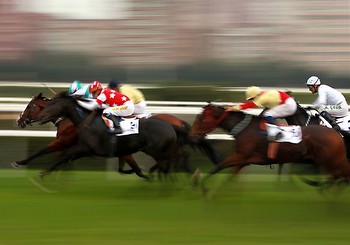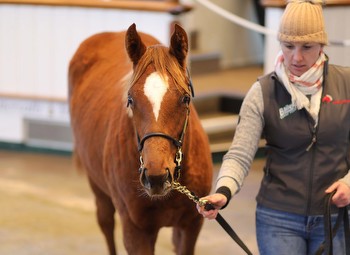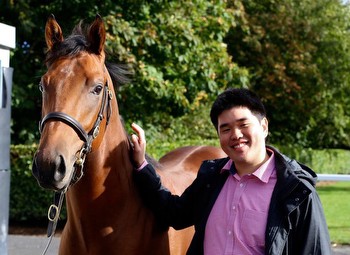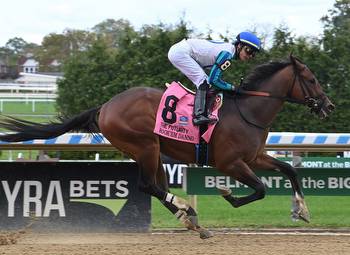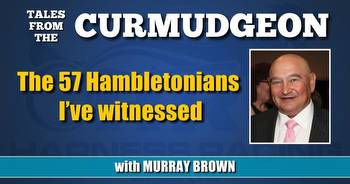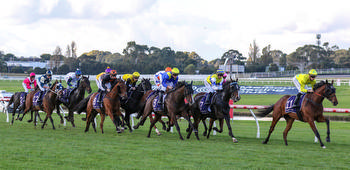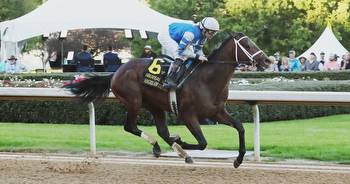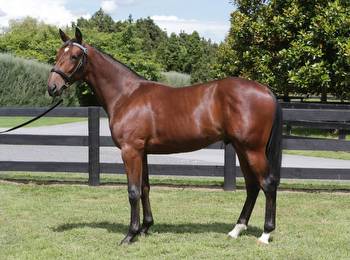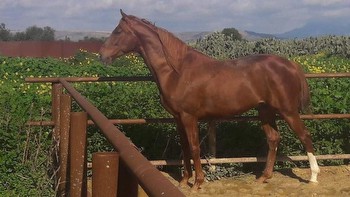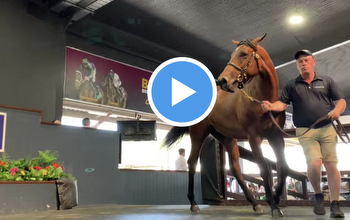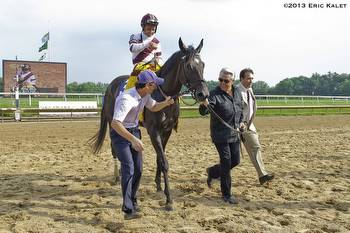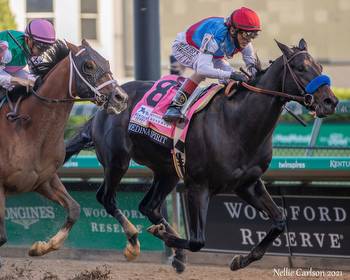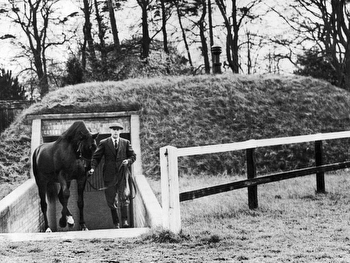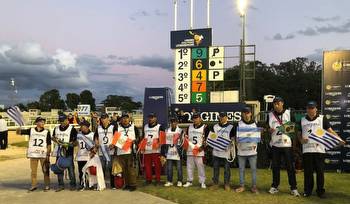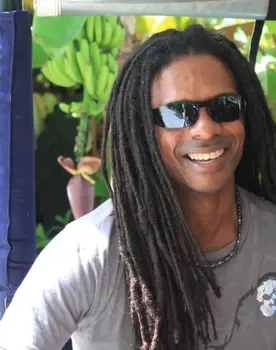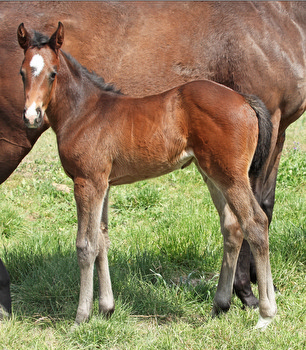Bloodstock Sales: The Biggest Gambles in Horseracing ‹ CrimeReads
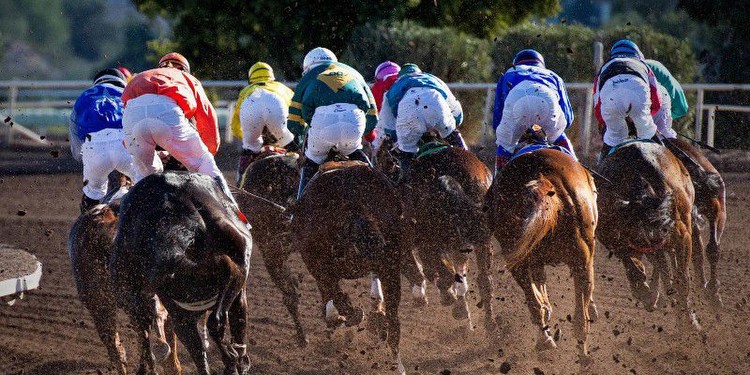
Horse racing and gambling are intertwined – always have been, and always will be. But the biggest gambles in racing are not made at the races or with a bookmaker, they occur in the sale rings, where vast sums are staked on untested, unridden and as yet unnamed one-year-old Thoroughbred colts in the hope they will turn out to be world beaters on the track, and then become sires of future champions.
Sometimes it happens and sometimes it doesn’t.
In 2016, the US colt, Justify, was sold at the Keeneland September Thoroughbred yearling sale in Kentucky for half a million dollars. He raced just six times, but he won all of those six races, including the Kentucky Derby, the Preakness and the Belmont Stakes to become only the thirteenth horse in the history of American racing to win the coveted Triple Crown. His prize money on the track was an impressive $3.8million, but that figure is dwarfed by his potential earnings as a stallion. Over a fifteen-year career, he is expected to amass stud fees in excess of $150million – making him worth at least six times his own weight in pure gold!
However, back in 1983, in the same Keeneland sale ring, Snaafi Dancer, a son of the great stallion Northern Dancer, was sold for $10.3million, a world record price for a yearling at the time (well in excess of $30million in today’s money). The horse never made it to a racetrack, as it was ‘embarrassingly slow’, so he was sent straight to stud where he was found to have fertility problems. In all, Snaafi Dancer sired just four foals, none of which ever won a race.
Now, that’s what I call gambling!
So racehorse breeding is a huge worldwide business with over a hundred thousand new Thoroughbred foals registered each year, most of which are destined for the sales rings as their first step towards a racecourse and hoped-for glory.
In the United States alone, the Thoroughbred breeding and racing industry generates over $40 billion annually in revenue, while providing almost half a million jobs at horse farms, training centres and racetracks. And there are currently 59 different national members of the International Federation of Horseracing Authorities (IFHA), ranging from the traditional horseracing countries such as the United States, Great Britain, Ireland, France, Australia and South Africa, to more unlikely venues such as Mauritius, Lebanon, Bahrain and Chad. The IFHA members are responsible for governing all the Thoroughbred racehorses in the world, some five hundred thousand of them, and with so much at stake in terms of prize money and future potential value at stud, regulations are extremely tight.
But, with such big money to be made, there have always been those who have tried to tip the odds in their favour by illicit means, and everyone in racing once had a story of a friend of a friend who beat the system with a dose of ‘go-faster’ or ‘go-slower’ juice administered to one nag or other. However, these days, with the widespread introduction of regular and accurate dope testing both at the tracks and in the training barns, those stories are rare, and probably not true.
Or are they? Is there some new drug, so far undetectable in a test, which speeds horses up, or slows them down? Maybe not, but you can bet your life that someone, somewhere is trying to find one.
And then there was the once widespread practice of running a ‘ringer’ – a horse that was supposedly one, whilst actually being another, one that was much faster and hence more likely to win. Many horses look very alike, and the switch was easy to do, and difficult to expose. But DNA and microchips have changed all that. In all IFHA countries, every Thoroughbred foal has its DNA profile recorded at birth, to confirm that it is indeed the offspring of its expected and declared parents, and it must also have a grain-of-rice-sized microchip inserted into the left side of its neck containing a unique identifying number. Every racehorse must have its microchip scanned each time it arrives at the track, and successfully checked against the official record, before it can start in any race.
You might well think that all these technological innovations have made it much more difficult – even verging on the impossible – to write mysteries involving skulduggery in the world of international horseracing. And you’d be right! Over the years, whenever my father or I found a loophole in the regulations, and exploited it – for fictional purposes only, you understand – the rule makers have then closed it off. For example, back in 1966, my father wrote the novel Blood Sport, a story that involved kidnapping a stallion and using it to improve the villain’s breeding stock. But the plot would be impossible these days due to the introduction of the Thoroughbred DNA register.
But just maybe there are ways round it! In my 2009 novel, Even Money, I had a character who invented an electronic device that was able to wipe the microchip in any given horse’s neck, so that a new chip could be inserted, showing it to be a different animal altogether. Fiction, maybe, but I was assured by a tame tech wizard friend that it wasn’t entirely beyond the realms of possibility. After all, the microchip in your contactless travel card is scanned and then rewritten every time you make a journey on the London Tube, the New York Subway, or the Paris Metro.
Like all the ‘Dick Francis’ novels, my latest thriller, No Reserve, is again set firmly in the exhilarating world of the Thoroughbred, this time at the bloodstock sales in Newmarket, England. Theo Jennings, a young auctioneer, is the protagonist and first-person narrator of the story and, as the book opens, he is centre stage on the auctioneer’s rostrum knocking down a yearling colt for three million guineas (US$4million), the most expensive horse he has ever sold. Later Theo overhears a private conversation that implies that the bidding was artificially inflated by collusion between the top two bidders, and then, the very next morning, the young colt is found dead in its stable, seemingly of natural causes. Theo attempts to find out what is going on, and whether there is any evidence of sharp practice, but someone seems determined to stop him … and at any price, including murder.
However, this and the previous 54 Dick Francis novels are not all about horses, they’re about people. The reader needs no prior knowledge of the horse, other than perhaps which end eats, and which end doesn’t. Horseracing is simply the canvas against which the human stories are painted. And what a canvas it is – highly competitive, high value and very high adrenaline. But remember – the higher the stakes, the greater the risk.
No Reserve – the title says it all!

